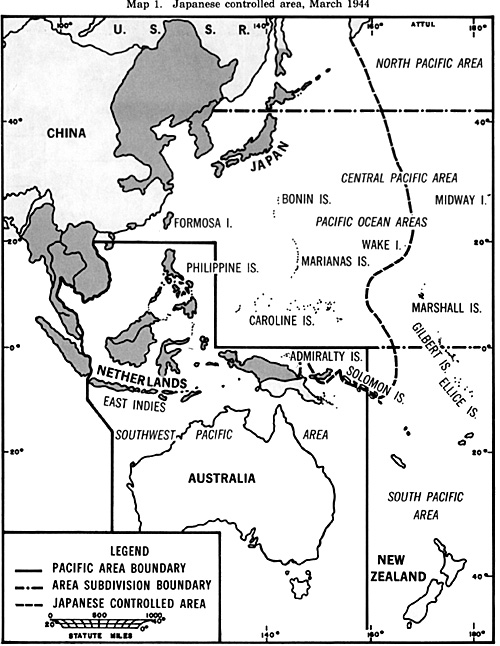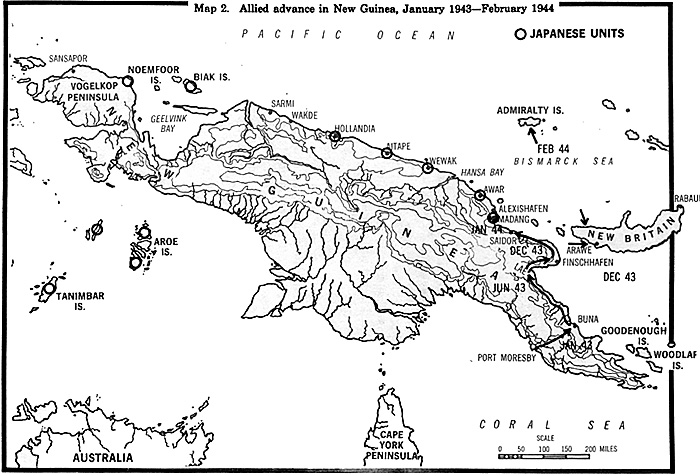 In the early spring of 1944 the prospects for a quick Allied victory in the war against Japan seemed remote. It is true that the Allied counteroffensive in the Southwest and Central Pacific had forced the Japanese to assume the strategic defensive, but despite these blood-soaked Allied gains, the Japanese home islands remained secure behind a vast defensive perimeter.
In the early spring of 1944 the prospects for a quick Allied victory in the war against Japan seemed remote. It is true that the Allied counteroffensive in the Southwest and Central Pacific had forced the Japanese to assume the strategic defensive, but despite these blood-soaked Allied gains, the Japanese home islands remained secure behind a vast defensive perimeter.
The Japanese primary defense line in March 1944 stretched from the Burma-India border through the Netherlands East Indies, most of New Guinea, the northern part of the New Britain and the Solomon Island chain, and then northward to the Kamchatka Peninsula. A glance at maps 1 and 2 shows that in two years of hard fighting the Allies had taken the Gilbert and Marshall islands, Guadalcanal in the Solomon chain, and the South tip of New Britain and had pushed the Japanese back along the north coast of New Guinea. Nevertheless, Japan seemed a long way off to the common soldier as well as to the strategic planners.
The Joint War Plans Committee in October 1943 estimated that in the spring of 1945 Formosa could be captured. This would be followed as soon as possible thereafter by an invasion of Hokkaido, the northernmost of the main Japanese home islands. These same planners envisioned an invasion of Honshu in the summer of 1946.
[1]
If, in retrospect, these men appear to have been unduly pessimistic, one should recall that on 1 January 1944 the closest American infantryman to Tokyo was more than 4,800 kilometers away, at Tarawa in the Gilbert Islands or at Lae, New Guinea. The distances staggered the imagination. The area from Milne Bay on the southeast tip of Papua, New Guinea, where the Australians had first repulsed Japanese invaders in August 1942, to the most forward Allied base at Dumpu, Northeast New Guinea,* was approximately 800 kilometers and had taken the Allies sixteen months to recapture.
*In 1828 the Dutch annexed the western half of New Guinea, but in 1885 the British established a protectorate over the southeastern coast and its nearby islands, Twenty years later, Australia gained control of British New Guinea and renamed it Papua. During World War I, Australian forces occupied the German controlled region of Northeast New Guinea and, after the war, received that area as a mandated territory.

Chapter 1: Ultra and Pacific Strategy
Back to Table of Contents -- Leavenworth Papers # 9
Back to Leavenworth Papers List of Issues
Back to MagWeb Master Magazine List
© Copyright 2005 by Coalition Web, Inc.
This article appears in MagWeb.com (Magazine Web) on the Internet World Wide Web. Other articles from military history and related magazines are available at http://www.magweb.com